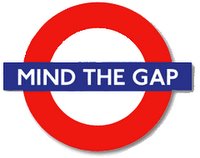
When designing your CV you should not worry about gaps of less then six months in the past fifteen years. However, a gap of anything more than six months may be conspicuous, especially if you do a chronological CV. How can you present gaps in your career history in a positive way?
Gaps are not necessarily a bad thing in a CV. Fewer and fewer people nowadays have uninterrupted careers and taking time out for professional study, career breaks or family commitments is increasingly the norm. Millions of students take 'gap years' between school and university. If you have gaps, you should consider making them visible in your CV and not trying to cover them up or apologise for them. If you have a lot of gaps, you might even consider adding a section to your CV titled 'Career Breaks'.
Here are a few more suggestions for minding the gaps:
1. If you have a lot of gaps and you think they are too obvious, consider doing a functional instead of a chronological CV. This approach focuses the reader's attention on your skills rather than your career history.
2. Exploit the gaps. If you took time out of paid work, what did you do? Can you represent this period of time in a positive way in your CV? If you did extended professional training, mention it in your 'Education and Training' section. If you learned a language or improved your ICT skills, cite this - with dates - in a section entitled 'Additional Skills'. You may try creating a whole new section of your CV to represent a career gap. It can be made to work in your favour.
If you took extended time out of the workforce to bring up a family, consider including this in your career history. Instead of concealing it, make it visible:
1993-1997 Full-time parent raising two children.
If you maintained some contact with your career, for example through part-time work, put 'Combined part-time work with raising two children' or something similar. If you had other commitments during this time, such as involvement with schools or the community, mention this elsewhere on the CV. Don't forget that CVs are rarely read from start to finish. Most readers skim and scan them. They will be connecting pieces of information from different parts of the CV to form a picture of you.
3. Use your cover letter. Often career breaks are the seed-time for new careers and new outlooks. If you had time out of paid work but you were actively improving yourself, use your cover letter to explain this and try to link it to the target job. If you had an extended period of travel, mention and use this experience to support your career aims rather than attempt to conceal it.
